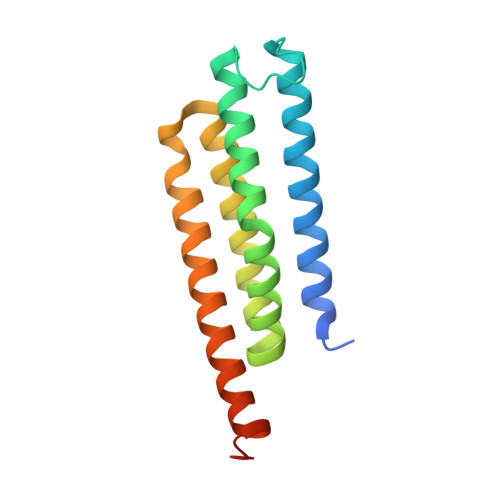Crystal structures of human MGST2 reveal synchronized conformational changes regulating catalysis.
Thulasingam, M., Orellana, L., Nji, E., Ahmad, S., Rinaldo-Matthis, A., Haeggstrom, J.Z.(2021) Nat Commun 12: 1728-1728
- PubMed: 33741927
- DOI: https://doi.org/10.1038/s41467-021-21924-8
- Primary Citation of Related Structures:
6SSR, 6SSS, 6SSU, 6SSW - PubMed Abstract:
Microsomal glutathione S-transferase 2 (MGST2) produces leukotriene C 4 , key for intracrine signaling of endoplasmic reticulum (ER) stress, oxidative DNA damage and cell death. MGST2 trimer restricts catalysis to only one out of three active sites at a time, but the molecular basis is unknown. Here, we present crystal structures of human MGST2 combined with biochemical and computational evidence for a concerted mechanism, involving local unfolding coupled to global conformational changes that regulate catalysis. Furthermore, synchronized changes in the biconical central pore modulate the hydrophobicity and control solvent influx to optimize reaction conditions at the active site. These unique mechanistic insights pertain to other, structurally related, drug targets.
- Department of Medical Biochemistry and Biophysics, Division of Chemistry II, Karolinska Institutet, Solnavägen 9, 171 65 Stockholm, Sweden. madhuranayaki.thulasingam@ki.se.
Organizational Affiliation:






















